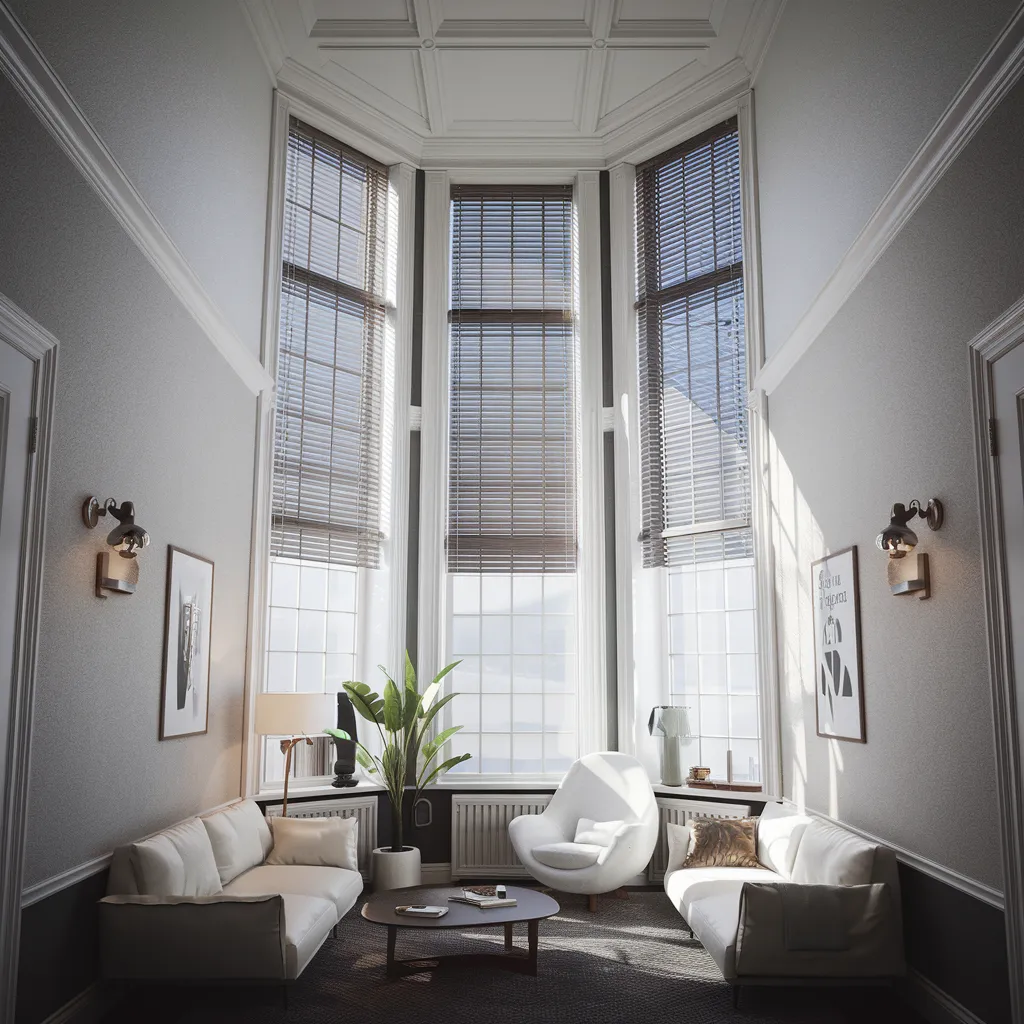Blinds are a functional necessity, but with the right approach, they can become an intentional design element that elevates the entire room. Mounting blinds thoughtfully and with intention can transform the way windows and rooms look and feel.
The Illusion of Height: Mounting Blinds Higher
One of the most effective tricks for creating the illusion of taller windows and enhancing the proportions of a space is to mount blinds significantly higher than the window frame, or even to the ceiling. This draws the eye upward, making the windows appear grander and the room feel more spacious. It’s a particularly useful technique for small spaces or rooms with limited natural light, instantly opening them up and adding an airy, expansive quality.
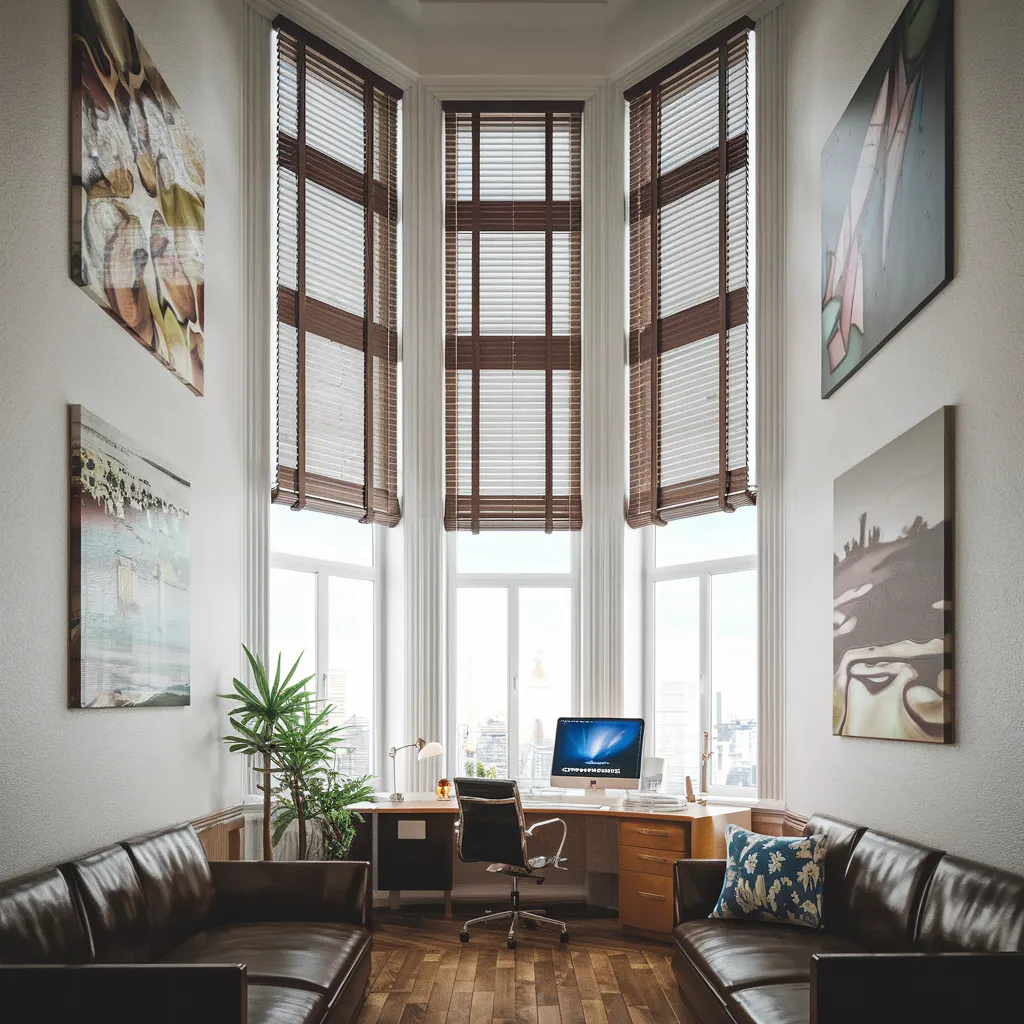
A striking office is defined by its tall arched windows dressed in dark wood-toned blinds that accentuate height while adding warmth. The interior blends modern and traditional touches: sleek leather sofas in espresso brown, a natural oak desk, and clean-lined artwork in muted grays and earth tones. A palette of deep browns, creamy whites, and muted neutrals gives the space gravitas, while green plants and wood flooring introduce organic texture for a more inviting workspace.
Unveiling the View: Going Wider Than the Window
While it may seem counterintuitive, fitting blinds a few inches wider than the window frame can visually enlarge the window itself. This allows the blinds to stack completely clear of the glass when open, maximizing natural light and creating a cleaner, more deliberate look. It also unveils the full view, rather than cropping it with the blinds’ edges. For a polished finish, extend the blinds at least 3 inches beyond the window casing on each side.
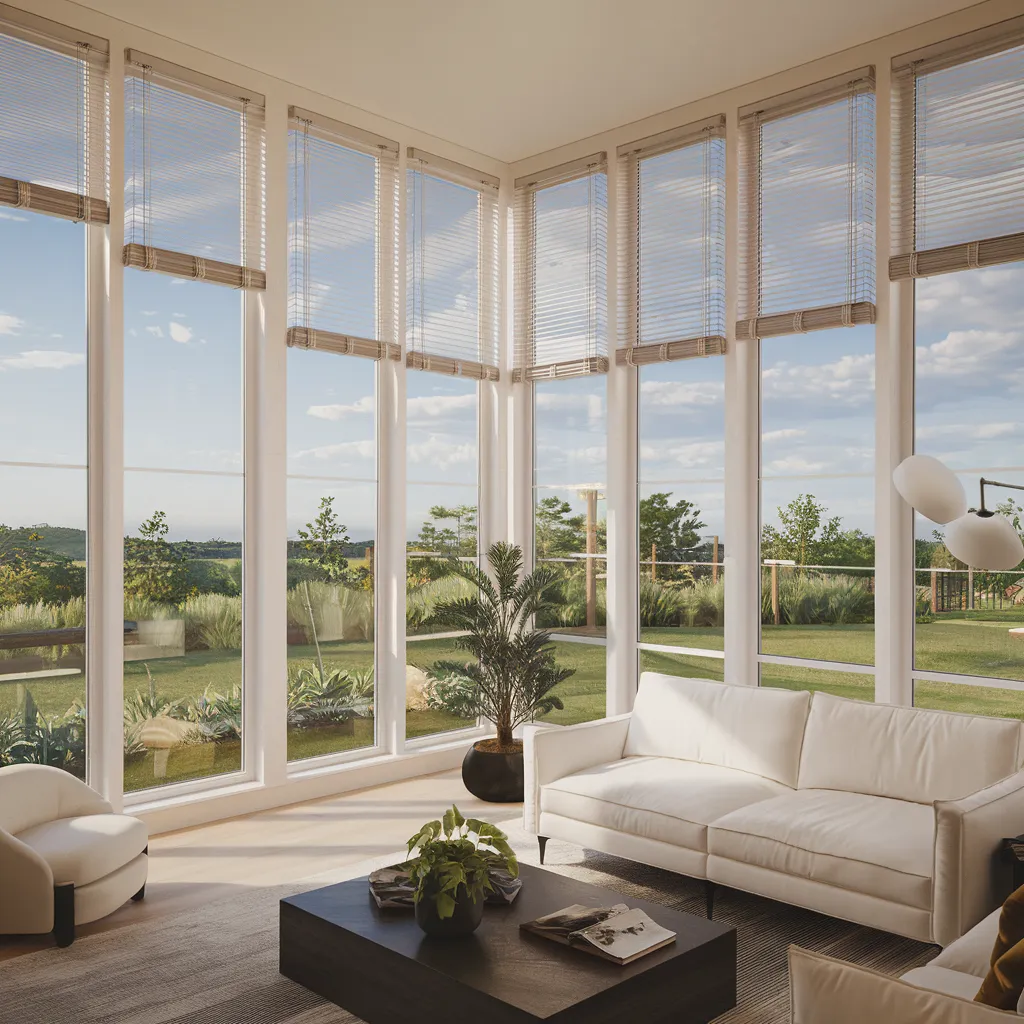
This light-filled sunroom celebrates openness and connection to nature through expansive glazing framed by delicate white blinds. The contemporary style relies on a crisp palette of warm whites and beige, paired with earthy browns in the central coffee table and flooring. Natural materials—linen upholstery, soft wool rug, and touches of greenery—soften the abundant sunlight. The result is a balanced space where clean architectural lines meet the organic calm of outdoor views.
Aligning Perfection: Consistency Across the Room
When a room has multiple windows, aligning the tops of the blinds at the same height, even if the windows differ slightly in size, creates a strong horizontal line that unifies the space. This consistency makes the room feel calmer, more ordered, and instantly more polished. It’s a simple but impactful technique that interior designers use to bring cohesion and intentionality to a space.
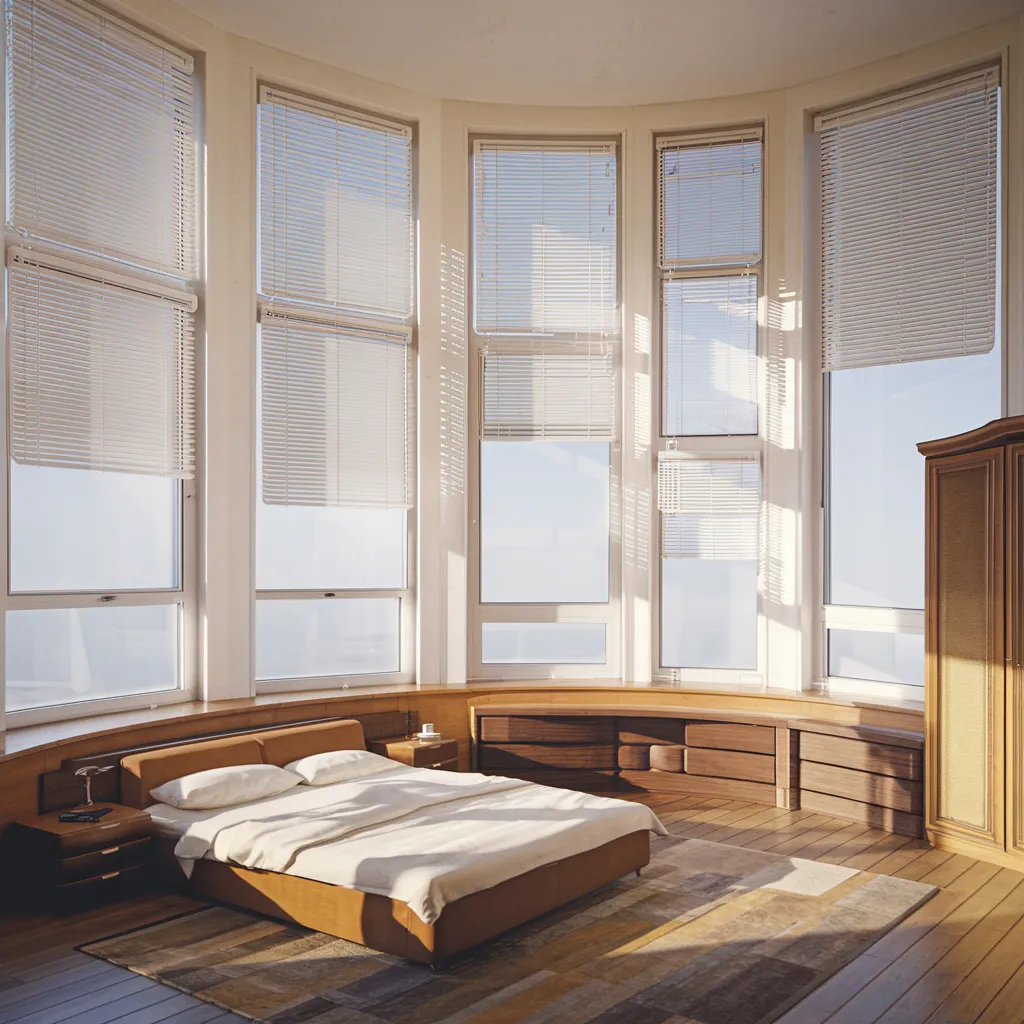
This serene bedroom showcases the tranquil power of natural light filtered through pale white blinds. The design emphasizes natural materials—warm wood floors, built-in curved shelving, and a low platform bed frame crafted in oak. Soft white bedding contrasts with golden wood tones, while a muted area rug ties the palette together in sandy beige, cream, and pale gray. The style is contemporary with organic leanings, designed for calm, comfort, and a timeless retreat-like atmosphere.
Layering Luxury: Combining Textures and Tones
Layering window treatments, such as combining sheer blinds with blackout curtains or heavier blinds with lightweight curtains, adds softness, depth, and a luxurious, layered look. It also provides additional sound and heat insulation, making the space more comfortable and energy-efficient. This technique allows you to play with different textures and tones, creating visual interest and a sense of richness. For example, pairing sleek roller shades with plush velvet curtains can strike the perfect balance between modern and cozy.
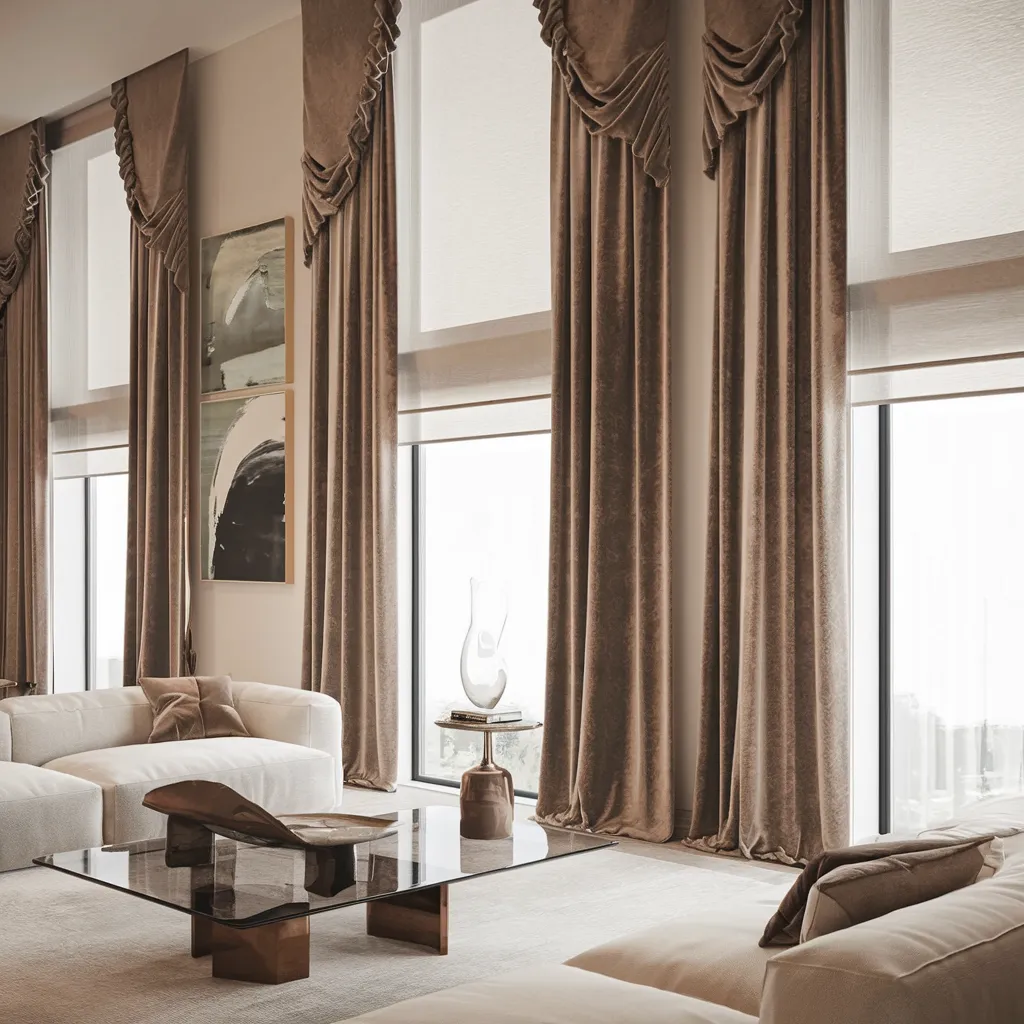
A living space of classic elegance features soaring windows dressed in plush taupe velvet drapes with softly pleated valances, offering a rich counterpoint to the room’s creamy neutral palette. A low, glass-topped coffee table anchors white upholstered sofas, creating balance between opulence and modern restraint. Warm browns, soft taupes, and shades of ivory dominate, with textures ranging from glossy glass to velvety textiles, achieving a sophisticated and timeless interior.
Hang Your Blinds Inside the Recess
For a sleek, space-saving, and contemporary finish, hanging blinds inside the window recess reduces light coming in and creates a neat, architectural look. This technique is particularly well-suited for modern or minimalist spaces, as it streamlines the window area and eliminates any bulky protrusions. It also allows the blinds to sit flush with the wall, maximizing floor space and creating a clean, uncluttered aesthetic.
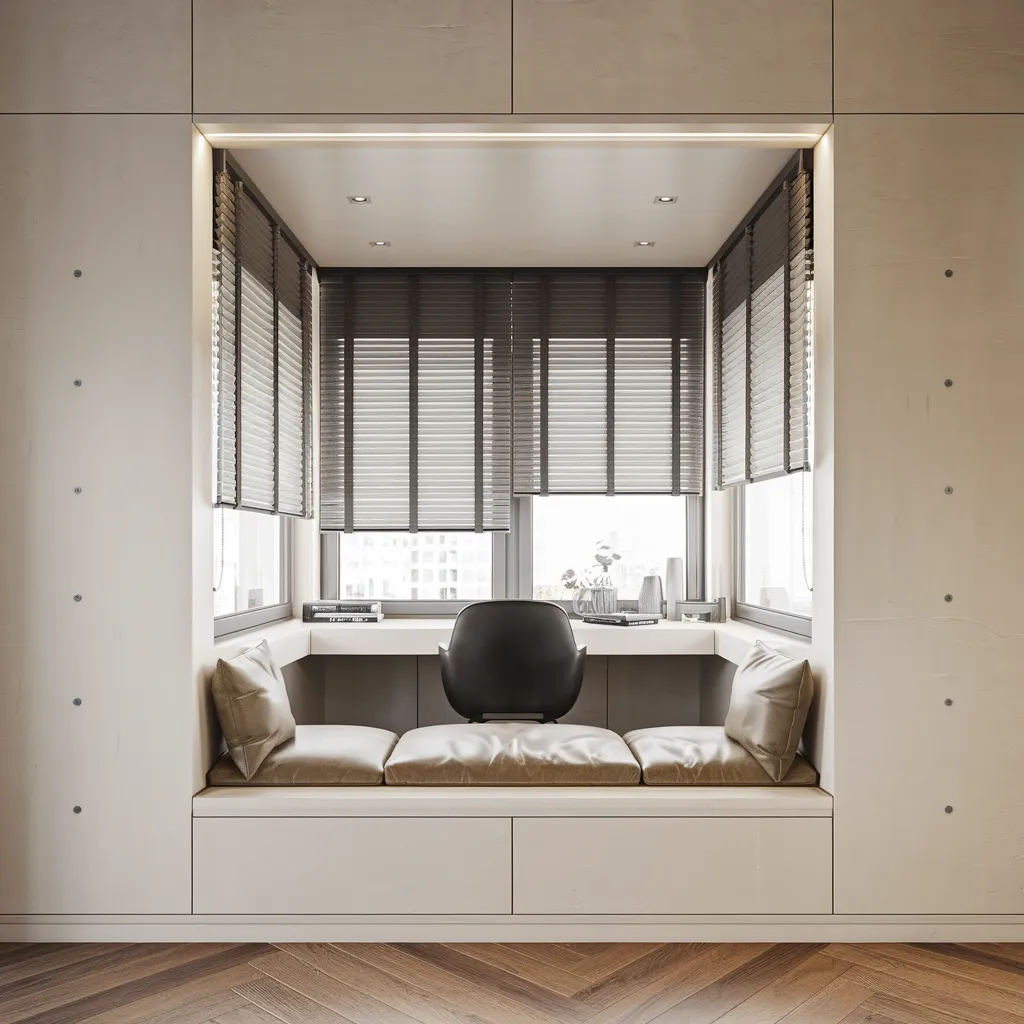
This clever window alcove blends seating, workspace, and storage into one streamlined design. The modern minimalist style is emphasized by clean-lined cabinetry in soft beige, a built-in cushioned bench with taupe leather pillows, and a compact desk surface. Gray Venetian blinds provide adjustable light control while echoing the muted tones of the space. Natural oak flooring in a herringbone pattern adds warmth, contrasting the cooler palette of whites, grays, and sandy neutrals.

